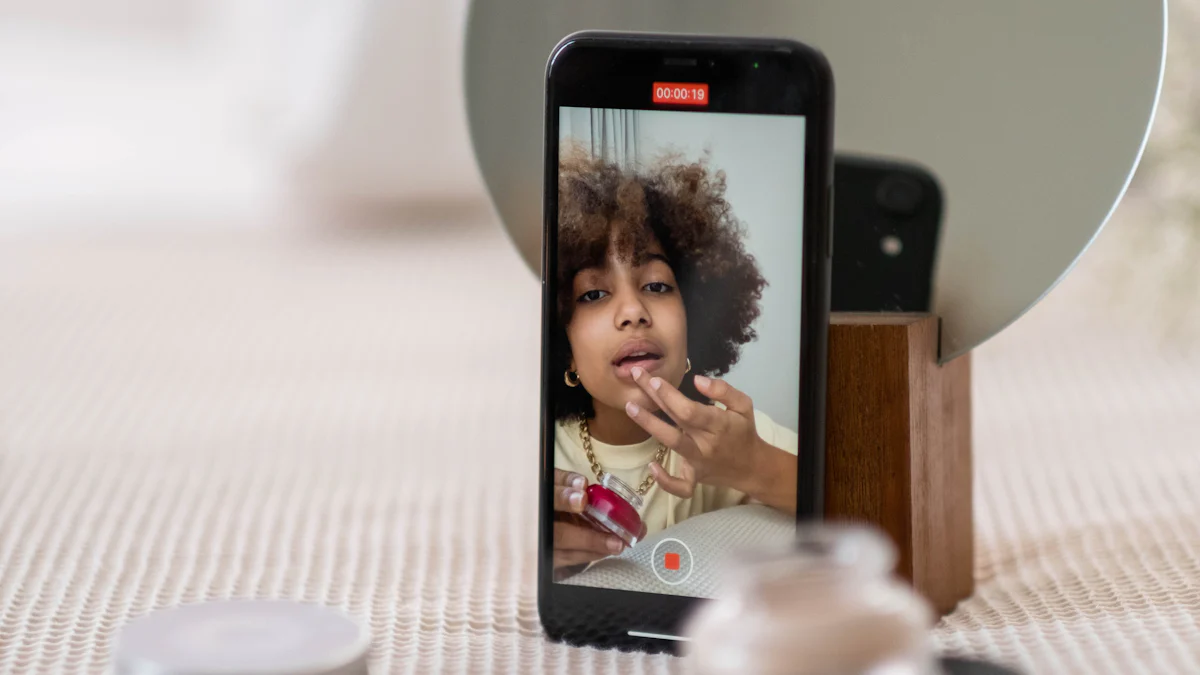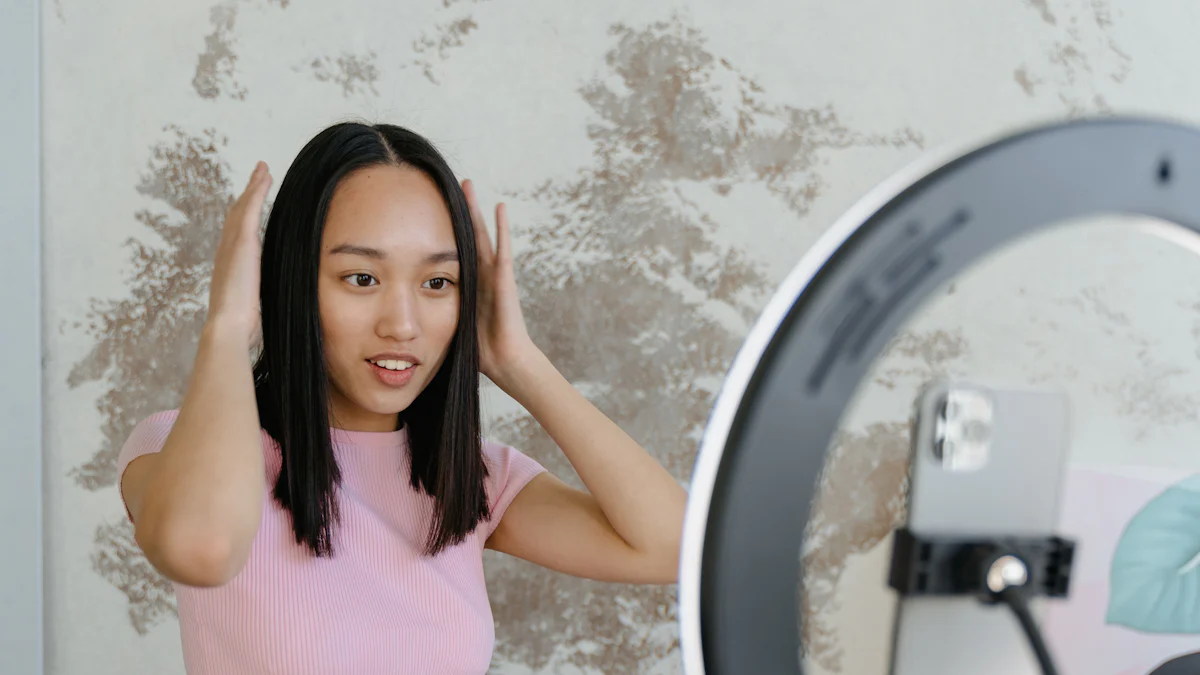The Pros and Cons of Micro Influencer Marketing in 2025

Micro-influencer marketing focuses on individuals with smaller yet highly engaged audiences, typically ranging from 10,000 to 100,000 followers. This approach has become a cornerstone of influencer marketing, with micro-influencers projected to make up 47.3% of all influencers by 2025. Why is micro-influencer marketing so effective? These creators build loyal communities that trust their recommendations, making their endorsements feel authentic. In fact, brands are expected to invest $9.29 billion in influencer marketing this year, marking a 14.2% increase from 2024.
However, there’s a catch: while micro-influencer marketing offers cost-effective, niche-targeted campaigns, it also comes with challenges like limited reach and management complexities. By understanding these pros and cons, you can develop smarter strategies that align with your marketing goals.
Pros of Micro Influencer Marketing

High Engagement Rates
Why micro-influencers drive better audience interaction.
Micro-influencers excel at creating meaningful interactions with their followers. Their smaller audience size allows them to form a personalized connection, which leads to stronger connections and more engagement. For example:
- Micro-influencers achieve an active engagement rate of 18% on TikTok, compared to just 5% for macro-influencers.
- Influencers with 1,000 followers have an engagement rate of 8%, while those with millions of followers average only 1.66%.
This personal vibe fosters an emotional bond with their audience, making their content feel relatable and authentic. As a result, micro-influencers often outperform larger influencers when it comes to better engagement.
How engagement impacts marketing success.
Higher engagement rates mean your brand gets noticed. When followers actively like, comment, and share posts, it boosts brand awareness and credibility. Campaigns like "I and Love and You Pet Foods" show how micro-influencers can drive results. By partnering with 400 pet influencers, the brand reached 7.8 million people and generated 64,000 engagements. This proves that higher engagement leads to stronger marketing outcomes.
Cost-Effectiveness
Budget-friendly advantages of working with micro-influencers.
Working with micro-influencers is cost effective, especially for small businesses. Unlike macro-influencers, who charge between $5,000 and $10,000 per post, micro-influencers often accept lower fees or even free products. This lower cost makes them accessible to brands with limited budgets. For instance, Trifecta added over 170 micro-influencers to its roster, producing more than 2,000 pieces of content without breaking the bank.
Benefits for small and medium-sized businesses.
Micro-influencers provide access to specific communities without requiring a massive budget. They’re ideal for small businesses looking to reach their ideal audience. By focusing on niche markets, you can achieve higher levels of brand credibility and emotional connections with your customers. Plus, their lower cost allows you to run multiple campaigns, maximizing your reach.
Authenticity and Trust
How micro-influencers build authentic connections with audiences.
Micro-influencers thrive on authenticity. Their followers see them as relatable individuals rather than celebrities, which builds credibility. This authenticity creates a loyal community that values their recommendations. For example, brands like Meller have successfully built a dedicated following by regularly collaborating with micro-influencers to showcase their products.
The role of trust in enhancing brand loyalty.
Trust is the foundation of any successful marketing campaign. Micro-influencers establish trust by maintaining a personal vibe in their content. Their genuine approach fosters an emotional bond with their audience, leading to higher engagement and brand loyalty. When followers trust an influencer, they’re more likely to trust your brand, resulting in long-term customer relationships.
Niche Targeting
Reaching specific, highly relevant audiences.
Micro-influencers excel at connecting with niche audiences. Their smaller following, typically between 1,000 and 100,000, allows them to focus on specific interests or industries. This means you can target highly relevant groups that align perfectly with your brand. Whether it’s fitness, beauty, or tech, micro-influencers help you reach the right people. Their audience isn’t just large; it’s engaged and trusts their recommendations. This trust creates a sense of community around your brand, making your campaigns more impactful.
Industries like fashion, food, and wellness benefit the most from niche targeting. For example, a fitness brand can partner with micro-influencers who specialize in yoga or weightlifting. This approach ensures your message resonates with the audience, leading to better results. By focusing on these smaller, engaged groups, you can build stronger connections and drive meaningful interactions.
Examples of successful niche campaigns.
Some brands have nailed niche targeting with micro-influencers. Take "I and Love and You Pet Foods," for instance. They collaborated with 400 pet influencers, creating 122 posts that reached 7.8 million people and generated 64,000 engagements. Another great example is The Honest Company. By working with fashion influencers, they boosted website traffic by 66% and achieved 4.7 million impressions. These campaigns show how micro-influencers can deliver big results by focusing on specific audiences.
Flexibility and Creativity
Adapting to unique brand needs with micro-influencers.
Micro-influencers bring flexibility to the table. They’re open to collaboration and willing to adapt to your brand’s unique needs. This makes them ideal for creating content that feels authentic and aligns with your goals. Unlike larger influencers, micro-influencers often give you more creative freedom. You can co-create content that speaks directly to your audience. This adaptability ensures your campaigns stay fresh and engaging.
For example, if you’re launching a new product, micro-influencers can tailor their content to highlight its unique features. Their creativity helps you stand out in a crowded market. Plus, their willingness to experiment means you can try innovative approaches without worrying about rigid guidelines.
Creative campaign examples showcasing micro-influencers.
Brands have used micro-influencers to create some truly innovative campaigns. H&R Block’s Tax Pro Go campaign is a standout. They partnered with six financial influencers to target Gen-X and millennials, resulting in over 6,000 engagements and a positive ROI. Another example is 20 Mule Team Borax. By working with six lifestyle influencers, they produced 100 pieces of content and achieved an 11% sales lift. Michel et Augustin also got creative with a locked parcel challenge, generating over 250 Instagram Stories and reaching 300,000 users. These campaigns prove that micro-influencers can deliver both creativity and results.
Cons of Micro Influencer Marketing

Limited Reach
Challenges in achieving large-scale brand awareness.
Micro-influencers have a smaller following, typically ranging from a few thousand to about 100,000 followers. While this helps them connect deeply with their audience, it limits their ability to reach a broader demographic. If your goal is mass awareness, micro-influencers might not be the best fit. Macro-influencers, with their follower counts ranging from 100,000 to 1 million, can provide much greater visibility for your campaigns.
- Micro-influencers excel at engaging niche audiences but struggle to create widespread buzz.
- Brands aiming for large-scale recognition often find macro-influencers more effective.
This limited reach can make it harder to achieve the kind of viral success you might expect from influencer marketing.
How limited reach impacts campaign scalability.
When you rely on micro-influencers, scaling your campaign becomes more complex. To reach a larger audience, you’ll need to collaborate with multiple influencers, which increases the workload. This can dilute your messaging and make it harder to maintain consistency across the board. If scalability is a priority, you’ll need to carefully weigh the pros and cons of working with micro-influencers.
Management Challenges
Complexity of managing multiple micro-influencers.
Managing one influencer is straightforward. Managing dozens? That’s a different story. When you work with multiple micro-influencers, logistical challenges pile up. You’ll need to coordinate schedules, ensure consistent messaging, and monitor content quality.
| Challenge | Description |
|---|---|
| Logistical Complexities | Managing multiple micro-influencers increases the complexity of the campaign. |
| Consistent Messaging | Ensuring uniform messaging across different influencers can be difficult due to their unique styles. |
| Variable Content Quality | The quality of content produced by micro-influencers can vary, affecting brand perception. |
These challenges can overwhelm your team, especially if you’re running a large campaign.
Tools to streamline influencer management.
Thankfully, tools like Klear, Grin, and Upfluence can simplify the process.
- Klear: Offers end-to-end influencer management and campaign tracking.
- Grin: Focuses on e-commerce, helping you discover influencers and manage outreach.
- Upfluence: Optimizes ROI with data-driven tracking and relationship management.
Using these platforms can save time and ensure your campaigns run smoothly.
Inconsistent Quality
Variability in content quality and professionalism.
Not all micro-influencers deliver the same level of quality. Some might create stunning visuals, while others produce content that feels rushed or unpolished. This inconsistency can hurt your brand’s image. Less experienced influencers may also misunderstand your goals or fail to meet deadlines, adding to your frustration.
Risks of working with less experienced micro-influencers.
When you work with micro-influencers, you risk miscommunication or mismatched expectations. For example:
- Some influencers might not fully understand your collaboration terms.
- Others might not align with your brand’s values or goals.
- A lack of professionalism could lead to missed deadlines or subpar content.
To avoid these pitfalls, set clear guidelines from the start. Define your goals, budget, and timeline. A written contract can also help clarify roles and responsibilities, ensuring a smoother collaboration.
Difficulty in Measuring ROI
Challenges in tracking campaign success.
Measuring ROI in micro-influencer campaigns can feel like solving a puzzle. You might struggle to figure out which metrics truly reflect success. For instance, how do you measure the value of increased brand awareness or emotional connections? These goals don’t always translate into immediate financial returns. Plus, tracking costs can get tricky. Should you include social media management expenses or just the influencer fees? Without clear visibility, it’s easy to miss hidden costs.
Another challenge is attribution. Buyer decisions often involve multiple factors, making it hard to pinpoint how much credit goes to your micro-influencers. On top of that, platforms don’t always provide comprehensive audience data, leaving you with incomplete insights. If you’re working with several influencers, tracking orders or traffic linked to each one can become overwhelming.
| Step | Challenges |
|---|---|
| Define Your Goals | Goals may not always be financially measurable in the short term. |
| Track Your Costs | Uncertainty about which expenses to track, like social media management. |
| Identify KPIs | Difficulty in using metrics like clicks and impressions for ROI. |
| Collect Data | Tracking orders and promotions across multiple influencers is complex. |
| Calculate ROI | Time-consuming process requiring advanced tools and precise data. |
Metrics and tools to improve ROI measurement.
To simplify ROI tracking, start by defining clear goals. Are you aiming for sales, engagement, or brand awareness? Once you know your target, track all campaign costs, including hidden ones. Use KPIs like clicks, impressions, and conversions to measure success. Tools like Meltwater can help. Its deep learning algorithm estimates ROI automatically, moving beyond basic metrics like likes or follower counts. It also tracks all campaign-related content, giving you a complete picture.
For a quick calculation, use this formula: (Return – Investment) / Investment * 100%. This helps you see the bigger picture and adjust your strategy for better results.
Saturation and Overexposure
Risks of audience fatigue with influencer promotions.
Let’s face it—audiences can only handle so many sponsored posts before they tune out. Over-reliance on influencers, especially big names, often leads to disinterest. People start seeing promotions as inauthentic, especially when influencers jump on social causes just for clout. This trend, known as slacktivism, creates mistrust. Examples of greenwashing—where brands exaggerate their eco-friendly efforts—only make things worse. If your audience feels bombarded, they’ll disengage, and your campaigns will lose impact.
Strategies to maintain authenticity in crowded markets.
You can avoid these pitfalls by focusing on authenticity. Start by choosing micro-influencers whose values align with your brand. Their smaller, engaged audiences are more likely to trust their recommendations. Build genuine relationships by involving influencers early in the creative process. Let them tell your brand story in their own voice. This approach fosters trust and keeps your campaigns fresh.
Transparency is another key. Make sure influencers disclose partnerships clearly. This honesty builds credibility and strengthens consumer relationships. According to Stackla, 86% of consumers value authenticity, yet most feel brands fall short. By prioritizing genuine connections, you can stand out in a crowded market.
Micro influencer marketing offers exciting opportunities, but it’s not without its challenges. On the plus side, micro-influencers bring high engagement, authenticity, and cost-effectiveness to your campaigns. They excel at targeting niche audiences and building trust. However, their limited reach and scalability issues can complicate large-scale efforts.
To succeed, align your strategy with clear goals. Start small to test the waters and use analytics tools to track performance. Platforms like Grin or Upfluence can simplify campaign management. Build long-term partnerships with influencers who share your brand’s values. This approach fosters loyalty and ensures your campaigns stay authentic and impactful.
Tip: Collaborate with micro-influencers who resonate with your audience. Their creativity and connection can make your brand stand out in a crowded market.
FAQ
What is the difference between micro and macro influencers?
Micro-influencers have 1,000 to 100,000 followers and focus on niche audiences. Macro-influencers, with 100,000+ followers, target broader demographics. Micro-influencers offer higher engagement and authenticity, while macro-influencers provide greater reach. Your choice depends on your campaign goals.
How do I find the right micro-influencers for my brand?
Start by identifying your target audience. Use tools like Grin or Upfluence to search for influencers in your niche. Check their engagement rates, content quality, and alignment with your brand values. Always review their past collaborations to ensure compatibility.
How much should I budget for a micro-influencer campaign?
Micro-influencer costs vary based on their follower count and platform. On average, expect to pay $100–$500 per post. Some may accept free products instead of payment. Set a clear budget and negotiate terms upfront to avoid surprises.
Can micro-influencer marketing work for B2B brands?
Yes, it can! Look for micro-influencers who specialize in your industry. For example, tech bloggers or LinkedIn thought leaders can help you reach decision-makers. Their expertise and credibility make them valuable for B2B campaigns.
How do I measure the success of a micro-influencer campaign?
Define clear goals like sales, engagement, or website traffic. Use tools like Meltwater or Google Analytics to track metrics such as clicks, conversions, and impressions. Compare results against your investment to calculate ROI and refine future strategies.
See Also
Evaluating the Benefits and Drawbacks of Influencer ROI
Advantages and Disadvantages of Using Smaller Influencers
Benefits and Challenges of TikTok Influencer Campaigns
